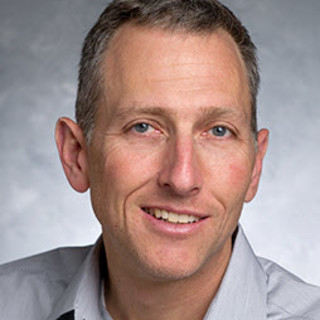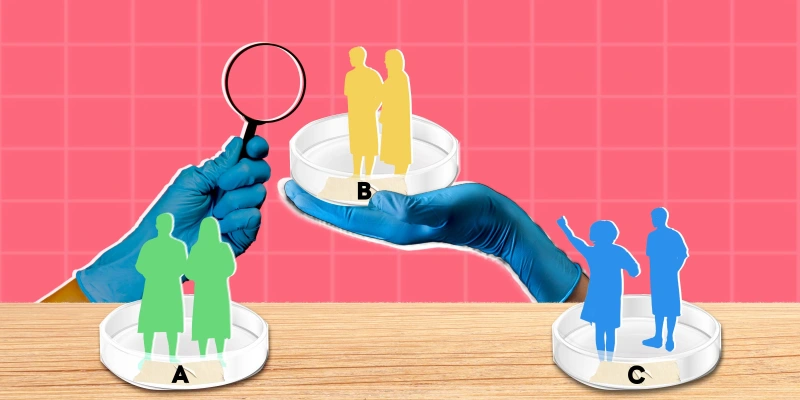
Something was not right, and that something was the first-year resident in front of me. He had come down to the emergency department to admit a patient to the intensive care unit, full of a frenetic energy that was out of place for the midnight hour. I was the senior resident trying to “hand-off” a new patient to him.
There is a shared structure and pattern to the efficient verbal exchange between physicians when presenting a new patient. It is learned early, used daily, and refined and polished during the first few months of residency. But this intern had me flummoxed. Despite several months’ experience, he was neither structured nor succinct. His eyes were unfocused and darting around the room. His arms were in constant motion. His frequent tangential questions made holding a conversation difficult. As he left the ED, I briefly thought to call his senior resident. But I chalked up his disorganized and chaotic behavior to the cumulative stress and fatigue of another night on call during a tough month in the ICU.
Days later, I learned that the intern had been in the middle of a manic episode that night in the ED. Fearful of repercussions from the residency program if he admitted his depression, he confided in another intern with just 10 months of training, who prescribed an antidepressant. That medication precipitated the manic episode I had witnessed. The intern’s fear and shame about his depressive symptoms jeopardized not only his own health but that of the patients he cared for while covering the ICU.
Although that night was more than 17 years ago, the culture of medicine, with regard to mental health, remains relatively unchanged. The same can be said about society as a whole. It is unfortunate that it takes the tragic death of a celebrity to move our discussions of mental health out from behind closed doors and into the public forum. For a brief moment in time, when the spotlight shines on someone famous, discussions about depression and anxiety are not talked about in muted tones and in private. They are brought into our collective consciousness, amplified by the evening news and talk shows, written about in op-eds and shared throughout social media.
Anxiety, depression, ADHD, bipolar disorder.
Suicidal thoughts, suicidal attempt.
Suicidal success.
If you are not aware of these issues either on a personal level or within your very close network of friends and family, I ask that you take a closer look. Despite the significant prevalence of mental health issues, conversations about them are still taboo. Naming the “disorders” can be embarrassing and shameful. Symptoms are often explained away or hidden. The public faces people project can mask what is actually twisting and churning inside their heads and souls, locked behind closed doors.
When it comes to issues of mental health, the culture within the medical workplace both reflects and amplifies the attitudes of society at large. Physicians do not talk about or share their own struggles. The stigma and shame are too strong. The risks of disclosure too high. Physicians, like successful fashion designers or famous television personalities, are not immune to the suffering of mental health disorders. Statistics even suggest that doctors are at greater risk of suicide, with more than twice the rate of the general population. Solitary resilience and individual fortitude are grossly inadequate approaches to the problem.
How can an issue affecting so many people be taboo? Maybe if we talk and share and acknowledge our challenges, it will help us connect and better understand our reality. People challenged with depression and anxiety do not need isolation added to the mix. What if we talked about anxiety the same way we discuss having a cavity and ask those around us for a recommendation to a good dentist? Why is there more shame in admitting to depression than poor oral hygiene? What if we ask for the name of a good therapist by crowdsourcing on Facebook, the way we might post a request for the name of a good local orthopedic surgeon for a painful knee?
Maybe it’s time to shine a light on what is the norm. Maybe it’s time to start with me.
I saw a psychologist when I was in grade school and junior high. As an adult, I’ve had two extended episodes where anxiety worked its way into my head, where I was aware of every breath and beat in my chest. I suspect I have ADHD and have likely been self-medicating via my four venti Americanos a day. And a few years ago, I made the decision to see a therapist to process a multitude of issues that affect my life as a husband, parent, and doctor.
My wife speaks openly about her lifelong battle with anxiety. She talks about her struggle to even admit she needed help, the medicines she tried that didn’t feel quite right, and how finding the right combination of medication helped her feel like herself again. Becky isn’t as open to therapy as I am. She goes just enough to feel like she’s got a handle on things. When she finds herself slipping into old habits that isolate her in a cycle of depression and anxiety, she has to actively fight her way back. One of the ways she does that is by talking. Talking with friends and family allows her to process things with the people whose opinions she values. She does not hide the challenges she faces and hopes that sharing her own journey will help normalize a path for others.
As of 2016, nearly one in five adults in the country suffer from mental illness. Yet, for a group of diagnoses that affect more than 44 million people over the age of 18, it leaves a surprisingly subtle and almost invisible footprint. People who suffer from physical injuries such as torn ACL can wear their external brace and talk proudly about their progress in physical therapy. Those with mental illness quietly suffer from internal injuries, and if able to pursue therapy, usually do the work required without any external praise or cheer.
The window of opportunity for widespread discussions about mental health opened and closed quickly, as the stories about Anthony Bourdain and Kate Spade faded from the news cycle. The medical profession and society at large have been lulled into a sense of complacency until news of the next prominent person to fall victim to suicide sparks another national conversation.
I believe it is time for physicians and the medical community to fill this void. As a group that suffers in the same way as those we treat, we have a unique opportunity, if not responsibility, to care for both our patients and to ourselves. By sharing our own challenges and experiences, we invite others to speak up when they are suffering. If the medical community can normalize and destigmatize issues of mental health, it will make it easier for those within our profession, as well as those that do not wear a white coat, to seek help.
How can we ask others to be more open and honest if we cannot do so ourselves? We need to take the lead in letting people know they are not suffering from mental illness alone and make sure that paths to getting help are not made more challenging by silence and shame within our own profession.
Jeremy Topin, MD is a Pulmonary and Critical Care Physician in Chicago, IL. He writes about end-of-life issues in the ICU, physician burnout and work/life balance. He blogs at www.jtopinmd.com and tweets @jtopinmd.
Dr. Topin is a 2018–19 Doximity Author.







